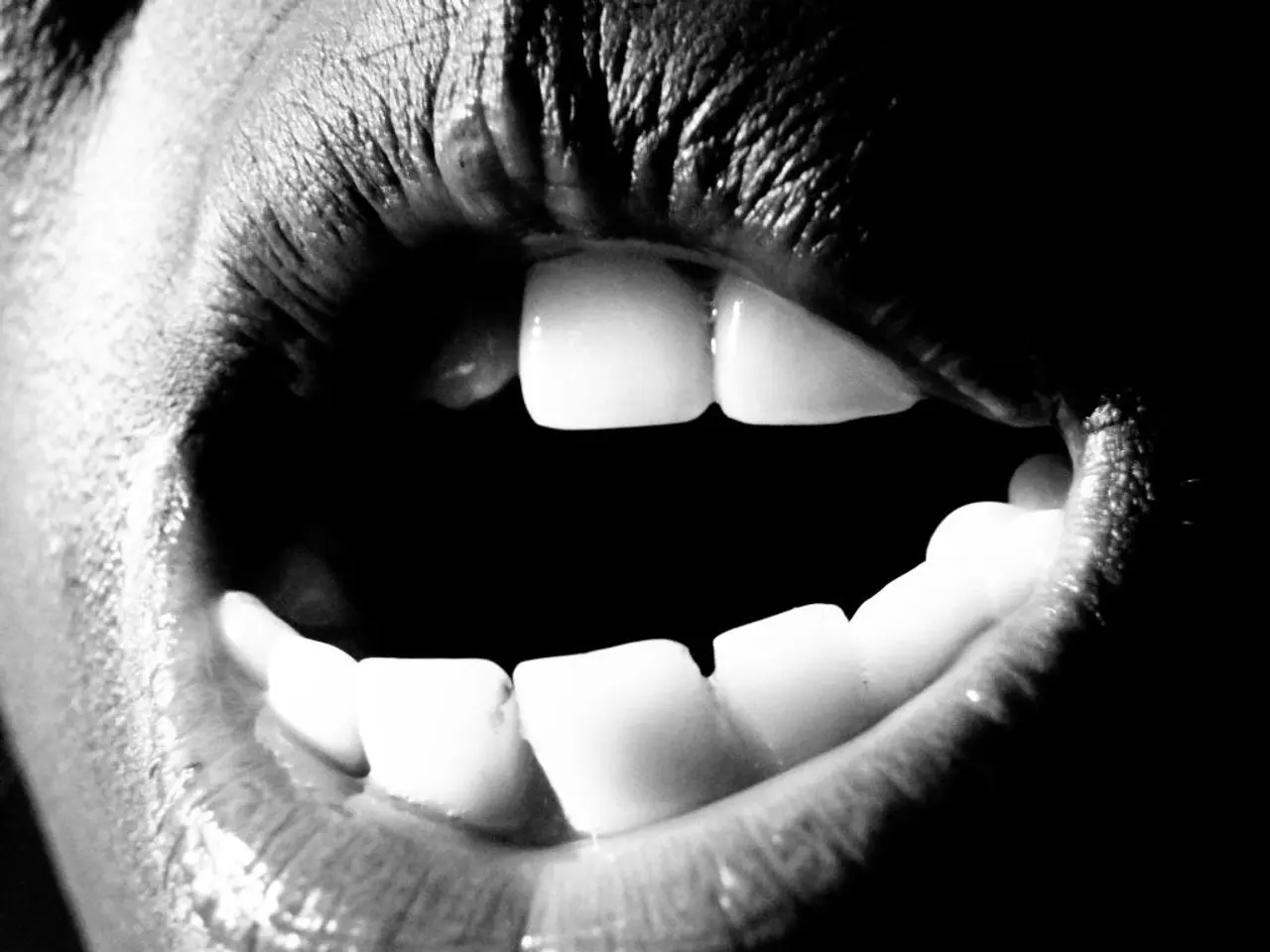Developmental Dental Sequence: Order of Eruption and Chronological Age for Children's Teeth
In the world of parenting, understanding the teething process is crucial. Here's a breakdown of what to expect, common misconceptions, and expert advice.
A child's teeth fall out at different ages according to the tooth type. For instance, the lower central incisor typically erupts between 6-10 months, while the upper central incisor might appear between 8-12 months. Most children have almost all of their adult teeth by age 13.
The American Academy of Pediatrics (AAP) advises against using certain teething products due to potential harm. Instead, parents and caregivers should manually rub a child's gums with a clean finger and teething rings made of firm rubber. The American Dental Association recommends brushing infant teeth as soon as they erupt with a tiny, rice-grain amount of fluoride toothpaste to prevent tooth decay.
It's essential to schedule the first dental visit after the tooth erupts and no later than the child's first birthday. Adequate oral hygiene is essential for children, even those who are shedding their baby teeth.
Common symptoms of teething may include drooling, an urge to chew, irritability, and gum irritation. However, it's important to note that teething does not cause a high fever (over 38°C or 100.4°F), significant diarrhea, or rashes. If high fever or diarrhea occurs, these symptoms are usually due to other illnesses and should prompt a visit to a healthcare provider.
Common misconceptions about symptoms associated with teething in infants include the belief that teething causes high fever, severe diarrhea, or other serious systemic symptoms. In reality, teething may cause mild irritability, gum swelling, increased drooling, a slight increase in temperature (low-grade fever), disturbed sleep, and chewing on objects, but it does not cause a high fever, significant diarrhea, or rashes.
It's also worth noting that not every baby experiences drooling, fussiness, and gum discomfort, and teething symptoms tend to appear a few days before and last a few days after a tooth appears. Some behaviors like ear pulling may be related to gum discomfort, but not all disturbances are due to teething, and unrelated illness can coincide with teething age.
Understanding that teething mainly involves localized gum symptoms and mild fussiness without causing serious illness can help parents distinguish normal teething from conditions that need medical attention.
For pain relief, commonly recommended remedies include pain relievers, such as ibuprofen and acetaminophen, and rubber teething rings.
By age 21, all 32 permanent teeth have usually appeared. The wisdom teeth may appear during a person's adolescence, young adulthood, or not at all.
References:
[1] AAP. (2021). Teething. Retrieved from https://www.healthychildren.org/English/ages-stages/baby/teething-tooth-care/Pages/Teething.aspx
[2] ADA. (2021). Teething. Retrieved from https://www.mouthhealthy.org/en/az-topics/t/teething
[3] Mayo Clinic. (2021). Teething. Retrieved from https://www.mayoclinic.org/healthy-lifestyle/infant-and-toddler-health/in-depth/teething/art-20046143
[4] McClure, J. (2020). Teething Myths Debunked. Retrieved from https://www.healthychildren.org/English/health-issues/conditions/teething/Pages/Teething-Myths-Debunked.aspx
[5] NHS. (2021). Teething. Retrieved from https://www.nhs.uk/conditions/teething/
- By providing Kids with age-appropriate food and food benefits, parents can help ensure their mental health and overall health-and-wellness, even during the teething stage.
- Pfizer, in collaboration with science, has developed infant pain relievers that are safe and effective for use during teething, as recommended by health professionals.
- To combat blocked milk ducts due to constant drooling during the teething phase, mothers may find it helpful to wear a well-ventilated or bra with front-opening access for easier breastfeeding access.
- A baby's first meal should be nutrient-dense and easy to chew, like pureed fruits and vegetables, to help manage discomfort during the teething period.
- Regular meal schedules coupled with proper dental care can alleviate potential issues like tooth decay and cavities for babies undergoing the teething process, as advised by the American Dental Association.







